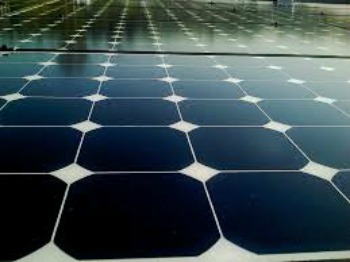We now live in a society consumed by technology and the unending demand for energy (mostly non-renewable as is the custom now in the world). And it makes sense considering the number of tech contrivances we use day in and day out. Energy is not just a precious commodity, it is already a staple in all aspects of human life. Yet we all know the many issues we face when it comes to energy use. Not only is there a big possibility of a non-renewable source like fossil fuel eventually running out but also the dangers its continued use poses to the environment.
 Why then does the majority of the population patronize non-renewable energy? Perhaps it is because they are convenient to use. There are already big businesses that market these products to the people and some that consequently made other related products that make use of this energy resource for them to work like most vehicles, appliances, smart gadgets, etc. when in all honesty, renewable energy is just as easy to use yet often ignored by society.
Why then does the majority of the population patronize non-renewable energy? Perhaps it is because they are convenient to use. There are already big businesses that market these products to the people and some that consequently made other related products that make use of this energy resource for them to work like most vehicles, appliances, smart gadgets, etc. when in all honesty, renewable energy is just as easy to use yet often ignored by society.
Given the gains made in reducing costs and improving efficiency for photovoltaic cells, it’s time to turn the solar office’s attention to thermal solar with or without the grid study, said David M. Hart, professor of science and technology policy at George Mason University.
“So for me it makes sense to rotate funding to less mature technologies,” Hart said.
Concentrated solar power, which requires local workers to construct and operate plants, also fits snugly into another Trump goal of creating jobs.
"It generates local employment," said Yogi Goswami, a solar energy expert and professor at the University of South Florida. Photovoltaic panels, Goswami noted, can be (and are) manufactured abroad more cheaply in China.
Most progressive countries like the US and China are actually the biggest energy users and contributors to the release of greenhouse gases to the atmosphere (hence global warming and climate change) because these places have countless manufacturing plants and industries that make just about everything you can think of that can thrive in a highly capitalist world. While some have already shifted to the use of solar energy years ago, many still miss out on what the sun can still offer aside from natural daylight.
"We started thinking that seems strange because if you look around the world, if you look on the ground, there's a lot of solar energy going in, so we went back to the forecast, we looked back over 15 years and looked at what people predicted, what happened to solar energy five years out, and it was consistently under-counting how much solar there actually was," Nemet said.
As for why solar's potential was underestimated, there are a number of reasons, but Nemet said the biggest driver is that solar is getting cheaper and faster than originally expected.
While technology is making solar increasingly more efficient and cost-effective, there are still challenges associated with the power source.
(Via: https://www.wpr.org/new-research-shows-solar-energy-may-have-been-undervalued)
While it is perfectly understandable that most people are concerned about the many limitations of solar power, let us not overlook its many advantages as well aside from being 100% environment-friendly. The main issue here is that why the government is turning a blind eye to the harnessing of solar energy in fueling our energy needs and gradually make the shift from the use of fossil fuel to that of sunlight. The weather may change now and then and it is not always sunny all the time but those things can be resolved with proper strategic planning and federal government support and funding to make solar energy more accessible to the public and replace whatever we are using right now.
The following article How To Go Solar was originally published on https://www.keatingeconomics.com/
source https://www.keatingeconomics.com/how-to-go-solar/
No comments:
Post a Comment